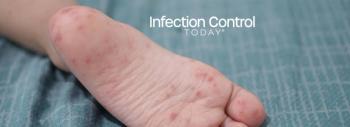
Second Wave of H1N1 Flu Was Greater Than the First
The second wave of the pandemic (H1N1) was substantially greater than the first with 4.8 times more hospital admissions, 4.6 times more deaths and four times more ICU cases, according to a study published in the Canadian Medical Association Journal (CMAJ). However, because of the larger number of people hospitalized during the second wave compared to the first, the percentage of people with severe outcomes was smaller.
The researchers compared demographic and clinical characteristics as well as outcomes of patients with (H1N1) influenza admitted to hospital during the first wave with those admitted during the second wave and post-peak period of the pandemic.
In the first wave, Nunavut, Manitoba and Quebec had the highest rates for hospital admissions. In the second wave, all provinces and territories were affected with the Maritimes provinces, Alberta, British Columbia, the Yukon Territory and the Northwest Territories experiencing much higher rates of hospital admission than in the first one. Quebec and Ontario were impacted in both waves, with Quebec reporting the highest number of hospitalizations and Ontario reported the most deaths overall.
At the height of the first wave (May 31 to June 20, 2009), 9.4 percent of hospital admissions, 10.1 percent of ICU admissions and 10 percent of deaths occurred. At the height of the second wave (Oct. 25 to Nov. 14, 2009), 51 percent of overall hospital admissions, 49.4 percent of ICU admissions and 53 percent of deaths occurred.
ICU admissions and deaths as a percentage of hospitalizations went down in the second wave.
"The second wave was substantially larger and, although the patients admitted to hospital were older and more of them had underlying conditions, a smaller proportion had a severe outcome," writes Melissa Helferty, of the Public Health Agency of Canada and coauthors. "The differences are thought to be due mainly to public health and clinical interventions implemented between the first and second waves."
"A national seroprevalence survey at the end of the first wave would have allowed us to better qualify the severity of the cases in Canada and permitted a more accurate comparison with other countries," conclude the authors.
Newsletter
Stay prepared and protected with Infection Control Today's newsletter, delivering essential updates, best practices, and expert insights for infection preventionists.






